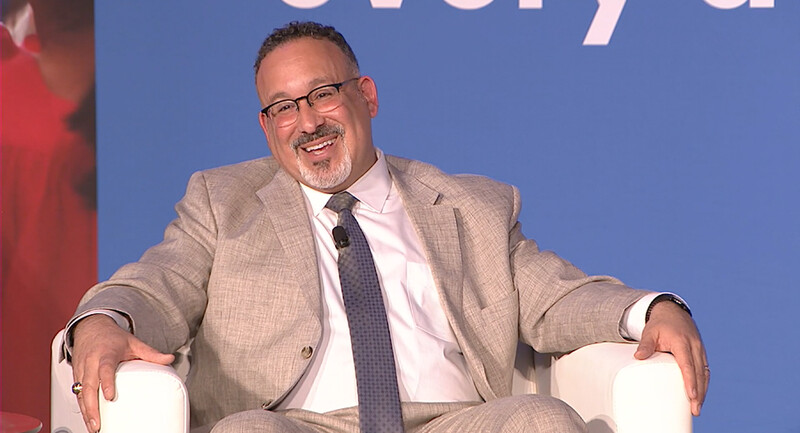I teach for the outcome, not for the income. I see this sentiment daily on my social media feeds. While it might be true for some, it’s not true for everyone. I teach for both, and I know I’m not alone.
When I moved to Nevada from Chicago in 2017 to find a teaching job, I was shocked by what teachers made. At the time, a teacher’s starting salary in Nevada was roughly $39,000 a year and they earned an average salary of $54,280 per year. The district I started with initially failed to match what I had made in my previous school district, with my years of teaching and advanced degree. It was a nightmare and a costly one. An entire year passed before the situation was rectified. A year of phone calls to human resources. A year of pleading for help from upper administration. A year of wondering if I should stay in the profession I loved. I desperately wanted to keep teaching but considered leaving due to the salary. Working for nearly a year at a rate below what I’d previously made was a high price to pay.
The data on teacher compensation are well-known—and not pretty. Teachers earn 20 percent less in weekly pay than other college-educated professionals and are three times as likely as other U.S. workers to report having multiple jobs. Ninety-four percent report spending their own money on school supplies. Some even pay out of pocket to make up for curricular gaps. In one survey, more than half of teachers across the country listed pay as a determining factor in whether they would leave the profession. Teachers under the age of 40 who left during the pandemic said that their salary did not meet the demands of the job and cited it as their primary reason for exiting.
Of course, the problem is not that school leaders don’t want to pay teachers more. It’s that states and districts have a finite amount of money for educators, and often not enough to meet the needs of schools. Given these constraints, how can states get creative about compensating teachers?
Pay Teachers to Support Teachers
School districts in the United States spend roughly $18 billion a year on professional learning. These funds go toward things like purchasing curriculum and paying outside consultants to deliver workshops. According to one report, the hefty price tag has historically had little impact on school improvement, teacher performance, or school culture. As Tom Guskey explains in “Professional Learning with Staying Power,” the research is clear: professional development should be ongoing, job-embedded, and relevant to teachers’ everyday practices. This is why teachers themselves, who work in schools daily, are invaluable when it comes to developing their peers.
Why then are so many school districts continuing to spend millions of dollars on professional development delivered by people outside of school communities? Outside expertise may be necessary in some cases, but a greater portion of these PD funds could be paid directly to teachers, many of whom are highly effective, engaged, and dedicated to improving and sharing their professional practice with colleagues. Many teachers don't get paid to deliver workshops to their colleagues, especially during the school day. In my district, for example, teachers can present as part of a professional growth plan, which counts towards recertification, but they receive no compensation. Not only does this strategy put dollars directly into teachers’ pockets, but it also promotes research-based practices such as making learning visible, collaborating, and addressing problems relevant to school communities.
Mentoring is another area where teachers’ expertise could be better leveraged—and better compensated. One study examining the impact of mentoring found that 92 percent of first-year teachers returned after being mentored by a veteran teacher in their same district. Teachers serving as mentors often have a wide variety of tasks as part of this role, including helping prepare lesson plans, observing instruction, providing feedback, and modeling best practices. Not all districts compensate teachers for mentorship roles and, when teachers are compensated, stipends can be insufficient for the amount of work involved in mentoring on top of their existing classroom duties. Evidence suggests mentors can be crucial in helping retain teachers and improving academic outcomes for students. Teachers serving as mentors for colleagues at their same school could play a critical role in districts with high turnover and should be compensated for the time and labor invested in supporting others.
Pay Teachers by Reducing Licensure Costs
Education leaders could also help teachers’ bottom line by limiting the price of just getting into the profession. Teacher salaries already lag behind when adjusted for inflation, making certification costs, which vary greatly among states, prohibitive, particularly for candidates of color, who face greater debt and economic barriers to entry and also leave at higher rates than their counterparts.
To address this, all states could dedicate federal funds to lower the cost of teacher preparation through scholarships and loan forgiveness in exchange for a commitment to teaching in high-need districts. States could also reduce or eliminate application costs by helping with fees such as getting transcripts and background checks. Currently, teacher certification ranges from $35-$200 depending on the state. Waiving these costs could encourage teachers who are relocating or applying for their first job to stay in the profession.
Raise Teacher Salaries
Nationwide, teachers are making $2,179 less than they did 10 years ago when adjusted for inflation. Nevada, Mississippi, Alabama, and New Mexico make up a handful of states that have increased teacher pay in an attempt to recruit and retain more teachers, but these increases are recent and it will take time to see if and how this strategy works. Pay increases are a solid first step and increasing teacher pay nationally could help prevent further exodus, especially in school districts hit hardest by shortages.
State education leaders and other education advocates need to organize and pursue federal legislative action around increasing teacher pay. One way would be to urge Congress to increase Title 1 funding, which would help to support increased teacher compensation in districts with large numbers of high-needs students. ESSER funds, which came about as a direct result of pandemic school closures, can also be used to hire and recruit teachers but currently expire in 2025. Education leaders should continue to push for increased funding at the federal level that can support retention as well as invest in the teacher pipeline. Nationwide, organizations such as the Teacher Salary Project are drawing attention to the urgency of making teaching an economically viable profession through research, policy, and ongoing advocacy.
The costs associated with entering and remaining in the teaching profession continue to be a barrier in places already plagued by shortages. Providing teachers with compensation that matches other educated professionals is not simply a matter of fairness but is necessary to improve educational outcomes and foster future economic stability of workers, their families, and communities across the United States. Without policies in place to address the pay gap between teachers and other professionals, schools will continue to struggle to attract and retain well-qualified teachers, which is a loss for America’s students.
Why I Stayed
I am still a teacher despite the challenges I encountered when first moving to Nevada years ago. I am still a teacher because I am valued, respected, and now compensated for my experience and expertise. How many teachers across the nation can say the same?
It's About Skillsets and Support, Not Sainthood
Cultural attitudes about educators often frame teaching as a “selfless calling.” Yet valuing education as a profession means recognizing teachers as the highly skilled experts they are—and compensating them for that expertise.









